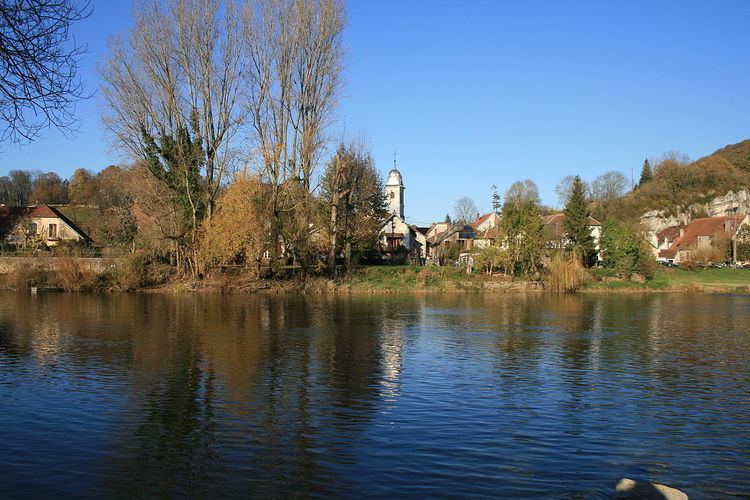Canton Boussières Population (2012) 2,317 Local time Friday 10:00 AM | Area 8.62 km² | |
 | ||
Region Bourgogne-Franche-Comté Weather 7°C, Wind N at 3 km/h, 75% Humidity | ||
Avanne aveney en r alit virtuelle htc vive google earth vr
Avanne-Aveney is a French commune in the Doubs department in the Bourgogne-Franche-Comté region of eastern France.
Contents
- Avanne aveney en r alit virtuelle htc vive google earth vr
- Map of 25720 Avanne Aveney France
- Avanne aveney re enactment of 1944 liberation
- Geography
- Toponymy
- Antiquity
- Ancient Times
- Genealogy of the house of Avanne
- Administration
- Demography
- Civil heritage
- Religious heritage
- Notable people linked to the commune
- References
Map of 25720 Avanne-Aveney, France
The inhabitants of the commune are known as Avannais or Avannaises.
Avanne aveney re enactment of 1944 liberation
Geography
Avanne-Aveney is located to the immediate south-west of Besançon with the town of Avanne joined to the Besançon urban area. The smaller town of Aveney is on the opposite bank of the river linked by a bridge. Access to the commune is by the D106 from Besançon which continues west to Grandfontaine. Route nationale N83 passes through the south-east of the commune from Beure in the north-east to Samson in the south. The D367 links Avanne to Aveney via a bridge across the river. The west and the east of the commune have extensive forests and the two villages have a substantial urban area leaving a small amount of land as farmland.
The Doubs river flows through the south-east of the commune as it flows south-west to join the Saône at Verdun-sur-le-Doubs.
Toponymy
Two propositions exist for the origin of the name of the commune. According to some linguists Avanne takes its name from the Latin avena meaning "oats" and, by extension, poor ground. For others, the name is from the Gallic abona meaning "river".
Antiquity
The occupation of the site in Gallo-Roman times is attested by the discovery of remains of a building in the north of the commune on Rue des Combots when the construction of the Grands Prés housing estate in the 1970s was finished. Unfortunately this was not reported at the time so these remains have not been studied except from the descriptions. A hypocaust, suggesting the existence of a Roman villa, was located on Rue des Blotets.
Ancient Times
The Lordship of Avanne was attested in 1092 and was dependent from the beginning on the lords of Montfaucon and the Counts of Burgundy. In the 12th century the lords of Faucogney had rights which they yielded in 1280 to the Count of Burgundy. The lordship then returned to the lords of Faucogney in the 14th century, then to the Dukes of Aumont in the 15th century which they kept until 1723. It was then owned by the Pourcheresse de Fraisans family.
Genealogy of the house of Avanne
The Chateau of Avanne, which was located on the borderr of the territory of Besançon, was owned by the lords of that name. It appears that this house was then passed to the lords of Faucogney: Gislebert de Faucogney, lord of Avanne, in 1180, gave land planted in vines and the use of his forests to the Abbey of Notre-Dame de Billon. This gift was confirmed by Aymé de Faucogney. Guy d'Avanne had already affixed his name to the donation made by Archbishop Hugh III to the Church of Sainte-Madeleine of Besançon in 1092. Hugues d'Avanne was cited in a title of Billon in 1163. Renaud d'Avanne, canon of Sainte-Madeleine, in 1189, gave a one third part of the Avanne Mill to the church. Thibaud d'Avanne, canon and cantor of the same church, in 1246 ceded to his chapter the share that he had in his kiln, called Kiln of Seet typochal, located at Charmont.
Hugues d'Avanne, knight, gave a meix located at the village of Estu to the abbey of Saint-Paul de Besançon. He was the father of Jean and Etienne who were mentioned in the will of their uncle Thibaud. Jean d'Avanne, knight, in 1246 approved the donation of the Charmont kiln made to the Chapter of Sainte-Madeleine by his brother. His son, Peter, was a Gentleman and he married Oudette, daughter of Raoul de Saint-Sevigne, knight. In 1287 Aymé d'Avanne, son of Thibaud d'Avanne, Gentleman, agreed to sell a vineyard at Étiennette created by Lambert d'Avanne, a citizen of Besançon.
The current commune of Avanne-Aveney is the result of the merger of the communes of Avanne and Aveney, at first as an Association in 1973 then a full merger in 2004.
Vineyards have long been a major resource in Avanne, especially until the 18th century. There are still many traces of the past with old houses equipped with wine cellars. Originally a ferry connected the two villages but it was replaced by a metal bridge in 1893.
Administration
List of Successive Mayors
(Not all data is known)
Demography
In 2012 the commune had 2,317 inhabitants. The evolution of the number of inhabitants is known from the population censuses conducted in the commune since 1793. From the 21st century, a census of communes with fewer than 10,000 inhabitants is held every five years, unlike larger communes that have a sample survey every year.
Prior to 1973 the population figures shown include both the former communes. For the population of Aveney alone before 1973 click here.
Sources : Ldh/EHESS/Cassini until 1962, INSEE database from 1968 (population without double counting and municipal population from 2006)
Civil heritage
The commune has one site that is registered as an historical monument:
Religious heritage
The commune has one religious building that is registered as an historical monument:
